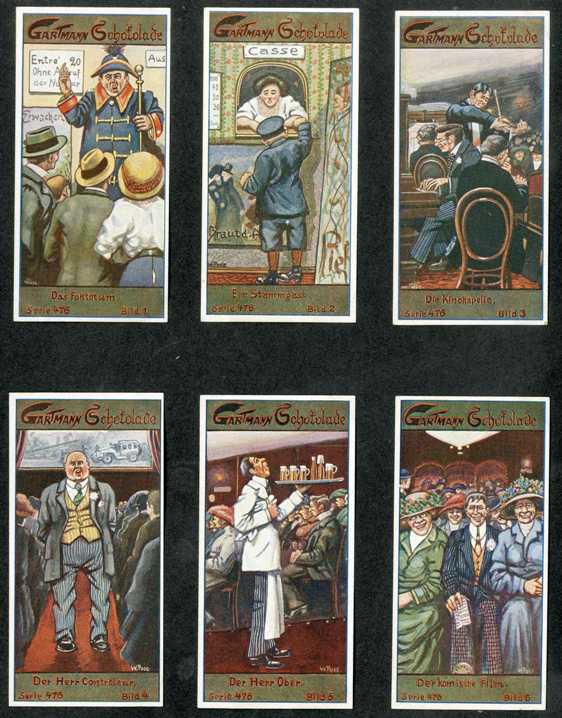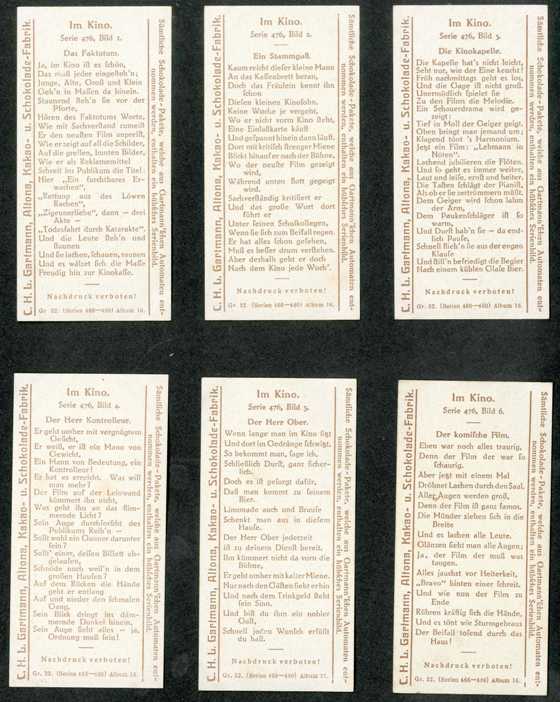Source: Alan Bennett, extract from ‘Seeing Stars’, London Review of Books, vol. 24 no. 1, 3 January 2002, pp. 12-16, reproduced with slight emendations in Untold Stories (London: Faber and Faber, 2005), pp. 160-173
Text: In the 1940s within a mile or so of where we lived in Armley in Leeds there were at least half a dozen cinemas. Nearest was the Picturedrome on Wortley Road but others were just a walk or a tramride away – the Lyric down Tong Road, the Clifton at Bramley, the Palace off Stanningley Road and the Western a bit further on. And without ever being a dedicated filmgoer I could have graded them all from fleapit upwards in their degree of comfort and sophistication just as, a little later, I would be able to grade the neighbourhood churches in terms of high and low, many of the churches and cinemas since sharing a common fate, conversion to carpet warehouses, second-hand furniture marts and, nowadays, health clubs.
Programmes changed twice a week and we generally went on a Monday and a Saturday. Comedies were best, particularly George Formby, but we took what was on offer, never knowing whether a film had any special merit. Some came with more of a reputation than others, Mrs Miniver for instance with Greer Garson, Dangerous Moonlight (with the Warsaw Concerto) and Now, Voyager with the famous cigarettes. But I’m sure I must have seen both Citizen Kane and Casablanca on their first time round with no notion that these were films of a different order from the usual twice-weekly fare. It was only towards the end of the war that more of a fuss started to be made over forthcoming films, so that I remember reading in Picture Post (and probably at the barber’s) about The Way to the Stars with the young Jean Simmons, and the making of Michael Powell’s A Canterbury Tale, and the first Royal Command Performance, another Powell film, A Matter of Life and Death.
Suburban cinemas were often pretty comfortless places. While the entrance could be quite imposing, with the box-office generally at the top of a flight of white marble steps, presumably to accommodate the rake, the auditorium itself was often not much more than a hangar, the aisle carpeted but the seats on lino or even bare concrete. Wartime meant there was no ice-cream but en route to the cinema we would call at a sweet shop and get what Dad called ‘some spice’, provided, of course, we had the points, sweet rationing the most irksome of wartime restrictions and still in force as late as 1952, when I went into the Army.
As a family we always went to the first house, which ended around 8.10, with the second-house queue waiting as we came out, scanning our faces for a clue to the experience we had just had, much as, I imagine, soldiers did when queuing outside a brothel. The second-house crowd seemed to me more loose-living than we were, raffish even. It certainly included more courting couples and folks who liked a drink (and who might even have had one already), none of whom minded rolling home at the to us unheard-of hour of half-past ten.
The waiting (and the Second World War involved a good deal of waiting in every department) was generally done up the side of the cinema in a grim open-sided arcade that today would be drenched in urine but wasn’t then. If the cinema was full and the performance continuous the commissionaire would come down the queue shouting: ‘Two at 1/9;’ ‘A single at 2/3.’ Or (very seldom): ‘Seats in all parts.’
We always called it ‘the pictures’, seldom ‘the cinema’ and never ‘the movies’. To this day I don’t find it easy to say ‘movies’, ‘going to the pictures’ still the phrase that comes to me most naturally, though nowadays I’m not sure that ‘the pictures’, like ‘the wireless’, aren’t among the self-consciously adopted emblems of fogeydom, the verbal equivalent of those smart Covent Garden establishments that do a line in old luggage. But calling the pictures ‘the movies’ went with calling cigarettes ‘fags’, beer ‘booze’ or girls ‘birds’. It signalled a relaxed, unbuttoned approach to things, life led with more of a dash than I was ever going to manage.
Picture-going was generally a family affair, but when we were still quite young, at eight or nine, say, we were allowed to go to U films by ourselves and (with a bit of nagging) to A films too. Since the A signified that a child could only see the film when accompanied by an adult this meant hanging about outside the cinema accosting congenial-looking cinema-goers, preferably women, with ‘Can you take us in, please?’ Warning us often, every time we left the house it almost seemed, against ‘stopping with strange men’, my mother never liked my brother and me to go to the pictures on our own, but only once did I come to any harm and then not really.
In 1944 we had moved, disastrously as it turned out, from Leeds to Guildford, where we stayed for a year, so at that time I would be ten, and had persuaded my mother one afternoon to let me go see Errol Flynn in The Sea Hawk, which I’d seen in Armley but was now showing at the Palace in Onslow Street (closed in 1956 to become a bingo hall and currently a nightclub called The Drink). I hung about for a bit until a genial middle-aged man in glasses came along with one boy in tow already. This seemed to indicate respectability and I was about to ask him if he would take me in when he got in first, even taking my hand before shepherding us both past the box-office; he may even have paid.
The film had already started, Errol Flynn flirting with Flora Robson as Queen Elizabeth while the usherette showed us down the aisle and before we had even sat down the man was pinching me and remarking on my nice chubby legs. This seemed fairly boring to me as, so far as I was concerned, they were just legs, but I put up with it for the sake of Errol Flynn, who soon after we sat down was away on the Spanish Main. However, the clutching and the pinching was getting more urgent until, innocent though I was, it dawned on me that this must be what Mam’s mysterious warnings had been about.
The sight of Errol Flynn now chained to an oar in the Spanish galleys seemed to bring these claspings to a new pitch of urgency and I decided, as they moved higher up my legs, that I ought to make a break for it. So I got up and, foolishly, headed not up the aisle to the foyer but down the aisle to the Gents where, not surprisingly, my admirer followed. Once there, I didn’t hide in a cubicle but just stood waiting, not knowing what to do.
I see myself standing in that cinema lavatory and hearing the bang of the swing-door as this kindly, bespectacled man, now suddenly sinister, comes through the door in pursuit. The entrance to the Gents was also the back door to the Exit and my admirer stood there for a second, obviously wondering if I had fled the cinema altogether. There was a moment, which in a film would hardly seem credible, when he stood with his back to me trying to decide if I’d gone. Had he turned and looked down the steps to the lavatory he would have seen me. But he didn’t turn, and obviously deciding it would be prudent to leave, he pushed the bar and went out through the exit door.
I wish I could record that I went back and watched the finish of the film but I just hung about for a few minutes until the coast was clear, then (though nothing had happened to me) ran home in mild distress. I told my mother, who became satisfyingly hysterical, but Dad, a shy and fastidious man who I knew regarded me as a liar and a show-off, was just made angry, refusing even to believe anything had happened and, if it had, ‘It was all nowt.’ Certainly I hadn’t been damaged, and if damage was done at all it was only in Dad’s refusal to acknowledge the situation. As it was, the only lasting effect of the incident was to put paid to any further lone visits to the cinema and to teach me to keep quiet. One’s legs often got felt up as a child. Dad’s old headmaster, Mr Alexander, used to give us lessons in algebra and he was a great stroker and clutcher, though only of the legs and not the parts appertaining. Vicars did it too, without seeming to want to take it further. It was something I came to expect, and just another of the ways in which grown-ups were boring.
Comments: Alan Bennett (born 1934) is a British playwright, screenwriter, essayist and actor. Untold Stories is a collection of essays and memoir, including the section entitled ‘Seeing Stars’, on his memories of cinemagoing, from which this extract comes. The films mentioned are Mrs Miniver (USA 1942), Dangerous Moonlight (UK 1941), Now Voyager (USA 1942), Citizen Kane (USA 1941), Casablanca (USA 1942), The Way to the Stars (UK 1945), A Canterbury Tale (UK 1944), A Matter of Life and Death (UK 1946) and The Sea Hawk (USA 1940).

